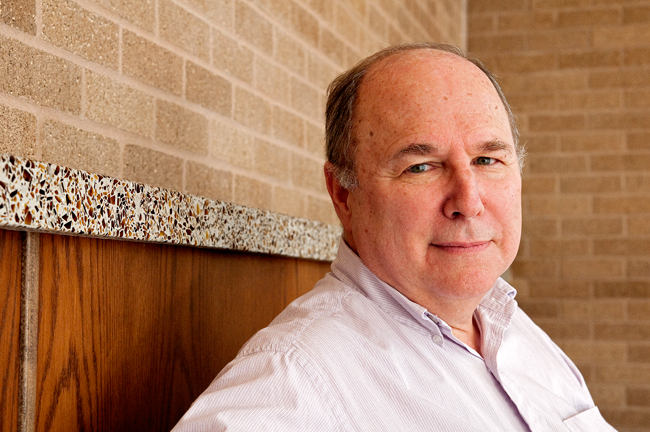Revealing evocative performances from and inspired by the Nazi concentration camp Terezín, “Creativity in the Face of Death: The Contemporary Resonance of Terezín” is a three-day symposium hosted by the Schusterman Center for Jewish Studies and Texas Performing Arts that explores the resilient creativity of those interned at the camp. The Symposium features works from the artists held in Terezín and works influenced by the art that they produced.
Used by the Nazis as an exhibition concentration camp to assure neutral nations and groups in World War II, Terezín housed thousands of the most talented musicians, artists, poets and writers from across Europe. Set against the gruesome backdrop of the Nazi regime, Terezín offered a strange cultural escape from the bleakness of World War II.
“It was this weird cultural life,” said Robert Abzug, history and American studies professor and coordinator of the Symposium and Director of the Schusterman Center at UT.
“There were the best musicians in Europe, with jazz musicians and cabaret actors. The creative output was extraordinary. This idea of artists working under those conditions was such an inspiration and such a testament to the human spirit. That alone was compelling just to see the way that it has inspired other artists.”
The Terezín Symposium is a conglomeration of different reactions and depictions of the bizarre reality of life in Terezín. Allowing concerts and performances to continue, the Nazis portrayed Terezín as a cultural oasis throughout the war. From a Holocaust film depicting the difficulties of the collaborative process to the music of internationally known British violinist Daniel Hope, the performances portray the resilience of creativity. Although they are an unconventional response to the Holocaust, the performances exhibited allow the audience to internalize the message of the pieces.
“Public performance reflects societal ideas about identity, contributes to how society is shaped or re-shaped, memorializes and responds to history,” said Rebecca Rossen, a dance history professor and one of the co-organizers of the Symposium. “Performance provides a very unique means to respond to the Holocaust. How can performance help us grasp something that is ungraspable and bear witness to that to make sure that this history is not lost?”
Preceding Daniel Hope and Friends’ orchestral performance, “Forbidden Music,” Oct. 9, Rossen will speak on the history of dances about the Holocaust.
“Because dance is not always linear — it’s not so obviously narrative the way a lot of films are — dance can capture the disorientation, emotion, difficulty and impact of an event in a very symbolic but poignant way,” Rossen said.
Representing the modern relevancy of Holocaust history, collaborative pieces juxtapose the past of Terezín with the modernity of the elements used in its portrayal. The contemporary dances in “Last Dance,” a collaborative film between author Maurice Sendak and the Pilobolus Dance Theatre, derive their inspiration from the past. The photography exhibit captures the raw human emotion and pain felt years after the war. Photojournalism professor Dennis Darling and Loli Kantor, a fine art and documentary photographer, have worked diligently to capture the stories and images of those last remaining survivors of Terezín and exhibit them as part of the Symposium.
“It’s the last living history,” Darling said. “It’s the last image of the Holocaust. Right now you can still talk to someone who has gone through it, so I talk to as many as possible.
All are unique; the only common thread is that they were in Terezín together.”
Capturing the memories of those interned at Terezín has immortalized their history. Presenting “Creativity in the Face of Death: The Contemporary Resonance of Terezín,” the Schusterman Center and Texas Performing Arts work to intertwine the arts and the dramatic history of World War II into a program that provides students and the community with the opportunity to experience living history.
“First of all, it’s a fascinating history, a deeply relevant history to our increasingly and still violent world. You can learn a lot about something that is ultimately an important question,” Abzug said. “It is the preservation of the human spirit and the preservation in the face of death. The depths of human spirit and resilience are important to continue to be humane human beings in the face of enormous odds.”
The importance of this remembrance transcends generations. Featuring the UIL award-winning performance of Celeste Rapanti’s “I Never Saw Another Butterfly” by students from Bastrop High School, the Symposium highlights art as a means of Holocaust education. The play features the art and thoughts of those children growing up in the nightmarish camp. It connects the abstract history of the Holocaust with the reality of fear felt by children.
“‘I Never Saw Another Butterfly’ was one of the first books I saw or read about the Holocaust,” Abzug said. “The first exposure has a real impact. I think it lived with me and still lives with me.”
Yet the next generation of students will be educated in decades devoid of living history; the Holocaust and its survivors will be only read about. The Symposium memorializes those who were killed in the Holocaust while depicting the creative triumphs of the resilient few who created art under the Nazi regime.
Printed on Monday, October 8, 2012 as: Exhibit reflects Holocaust camp




















